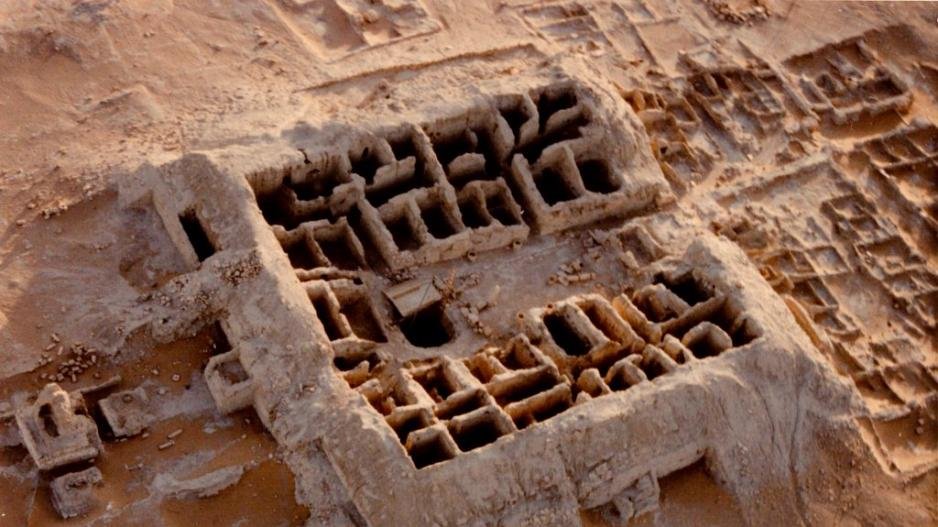Ancient Temple Unearthed in Saudi Arabia’s 8000-Year-Old Archaeological Ruins


South-west of the nation’s capital, Riyadh, the Saudi Heritage Commission discovered an 8000-year-old archaeological site at the location of Al-Faw. Using cutting-edge technology, a multinational team of archaeologists under Saudi leadership conducted a thorough survey of the site. According to Saudi Press Agency, the study made use of topographic surveys, guided drone footage using ground control points, remote sensing, ground-penetrating radar, laser scanning, and geophysical surveys, as well as detailed walkover surveys and sondages throughout the site (SPA).
The most noteworthy of the many finds at the site were the remnants of a stone temple and pieces of an altar, which provided abundant evidence that the residents of Al-Faw formerly lived a life centered on rites, worship, and ceremonies. East of Al-Faw, atop Mount Tuwaiq, also known as Khashem Qaryah, is where the rock-cut temple is located.
The new technology also made it possible to find 2,807 graves scattered throughout the site that have been recorded and divided into six groups, as well as the remains of 8,000-year-old Neolithic human settlements. The earth was covered in devotional inscriptions that offered a look into the residents of Al Faw’s worldview. An inscription in the Jabal Lahaq sanctuary by a person named WHBLT (Wahb Allat) of the family of MLHT (Malha), natives of Guerra, invokes the god Kahal, the deity of Al-Faw (the city of Al Jarha).
A complex, beautiful, and well-planned city with the foundations of four major buildings, corner towers, interior plans, and open-air courtyards is also confirmed by the site, in addition to its cultural riches.
In addition, an elaborate irrigation system with canals, water cisterns, and hundreds of pits was discovered during the archaeological study in the world’s driest regions and harshest desert conditions.
For the past 40 years, archaeological research has been concentrated in the Al-Faw archaeological area. The investigations’ findings were eventually published in seven book volumes. Al-cultural Faw’s life has been mentioned before as well, with references to residential and market areas, temples, and tombs; however, the most recent finds are much more thorough in their findings.
More significantly, the Al Faw site’s discoveries show that there was a civilization there before the monolithic, non-idol-worshiping, anti-temple practices of Islam that are still practiced there today. These findings might also call into question the generally held belief that the Arabs were made more civilized by the Islamic invasion.
DISCLAIMER: The author is solely responsible for the views expressed in this article. The author carries the responsibility for citing and/or licensing of images utilized within the text.
